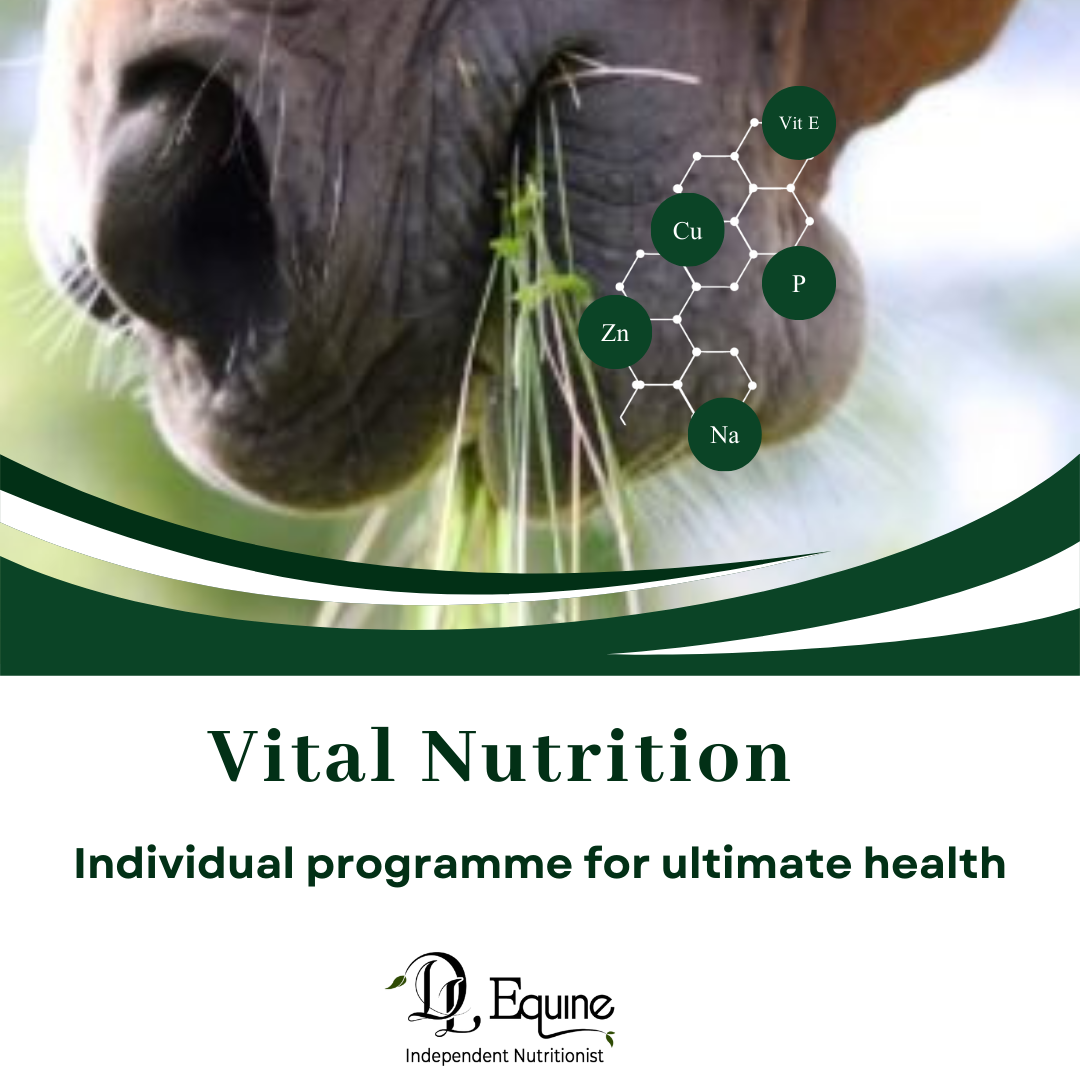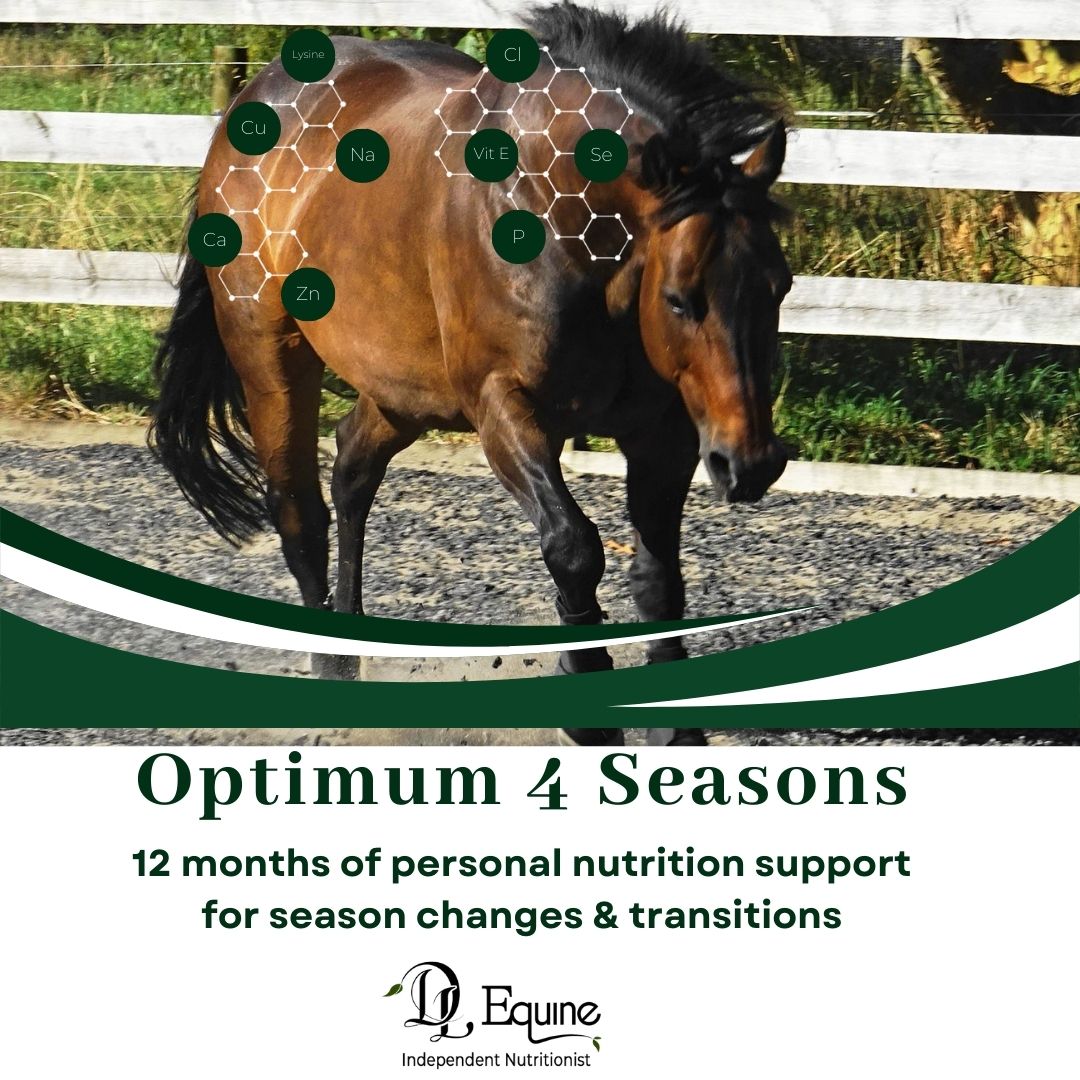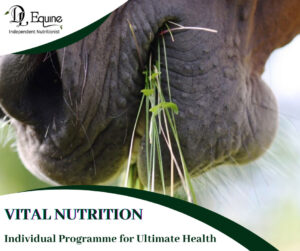Inflammatory airway disease (IAD) and recurrent airway obstruction (RAO) and summer pasture-associated obstructive pulmonary disease (SPAOPD) (collectively referred to as equine asthma syndrome) can negatively impact the overall health and performance of the horse.
These diseases cause excessive inflammation and airway mucous production, characterized by recurrent cough, respiratory distress, and exercise intolerance to varying degrees.
RAO generally affects horses over the age of 7, whereas IAD can affect any age.
(Chronic Obstructive Pulmonary Disease (COPD),the terminology formerly used for “heaves,” describing a hypersensitivity response associated with exposure to inhaled antigens, is no longer in use as it is considered a part of RAO)
These represent a range of chronic inflammatory disease of the airways in horses. These equine respiratory diseases show common characteristics with human asthma and these disorders, particularly the lower airways, are the most frequently diagnosed conditions in sport horses evaluated for poor performance.
The estimated prevalence of RAO in the northern hemisphere is about 14%, with incidence and severity of the disease increasing with age and stabling; RAO is a common reason for the career’s end of sport horses. Since RAO was much better defined over the last 20 years than IAD, equine asthma literature mainly focused on RAO. However, there is an increased risk for IAD horses to develop RAO.
Numerous management factors impact the development and trajectory of equine asthma syndrome. Environmental conditions, housing, and feed can all have deleterious effects on the equine respiratory system. While genetics can also influence the risk of equine asthma syndrome, with disease prevalence being greater (approximately 30%) in half sibling families from a sire with inherent disease susceptibility.
However stabling and management practices are the most common causes. Exposure to dust and its constituents (fine particles of feeds, straw, feces, microorganisms, mites, toxins of microbial origin, and chemically active substances like ammonia) is the most important challenge to the respiratory tract. This exposure causes an allergic reaction or hypersensitivity to airborne particles.
What happens in the horse?
Horses with heaves, those with recurrent airway obstruction (RAO) and summer pasture-associated RAO, exhibit marked lower airway inflammation and obstruction associated with frequent coughing, increased respiratory effort at rest, and exercise intolerance.
Recurrent airway obstruction principally affects horses over seven years of age.
In contrast, inflammatory airway disease (IAD) can affect horses of all ages, and clinical signs are usually subtle, including poor performance and occasional coughing but with normal breathing at rest.
Racehorses and non-racehorses of all ages and from any breed/discipline can have IAD. Clinical signs of IAD include decreased performance and chronic, intermittent cough.
These signs are nonspecific and can be subtle. Poor racing performance in racehorses and reduced willingness to perform in showjumpers and dressage horses are associated with excess tracheal mucus.
Horses affected with SPAOPD are typically over 8yrs of age and are often kept at pasture for more than 12hrs per day. High environmental temperature and humidity are associated with clinical exacerbation of the disease.
Clinical signs range from exercise intolerance and coughing, to laboured breathing and increased respiratory effort, as well as wheezing and in the long-term, weight loss. Some horses will suddenly present with severe dyspnoea (nostril flaring and in severe cases open mouth breathing), which will require immediate emergency veterinary treatment.
Horse Respiratory System:
As horses are obligate nasal breathers they are predisposed to inhaling dust, pollen, spores etc from the environment. The anatomical defences of the upper respiratory tract protect the airways, in that much of this inhaled material is filtered from the surrounding environment. However, very small particles (less than 5-10 microns in diameter) are able to bypass this mechanism and reach the lungs, which in turn initiates a non-specific immune response.
Dr Eleanor Kellon, VMD and Horse Nutritionist writes that the first line of defense of the respiratory system is a mucus layer on all surfaces. This traps potential irritants and is a barrier to invaders. There is a rich antioxidant system to both combat incoming problems and protect the tissues from immune system responses. The local immune system is robust but may also be triggered to have strong reactions against these irritants and potential allergens.
Horses can develop an allergy upon first exposure to a substance: John Madigan, BS, DVM, MS, professor of equine medicine in the department of medicine and epidemiology at the University of California, Davis, School of Veterinary Medicine says. “You can have a hypersensitivity to something the first time you see it. On the other hand, it might take weeks, months or even years for an allergy to emerge. A 20-year-old horse with no history of allergies can one day appear to have an allergic reaction.”
High dust concentrations are common in the environment of conventional stables, and several studies have identified the stabling of horses as a risk factor for IAD. Within this environment, the respirable fraction can contain various organic and inorganic particles, including fungi, molds, endotoxin, beta-D-glucan, and other ultrafine particles. A horse can also develop allergy to pollens and grasses in their environment.
In my work as an equine nutritionist I most often comea cross RAO brought about by pollen exposure primarily from pine trees.
Obstruction to airflow is because of the thickening of the airway wall, contraction of the bronchial muscles (bronchospasm) and excessive production of mucous and neutrophils (white blood cells) which are part of the inflammatory response, accumulating in the airway lumen.
As stated above feed hygiene and the development of IAD and RAO is related to the presence of contaminants (ie., dust, mould, bacteria, microorganisms). The more contaminated the feed, the higher likelihood of developing respiratory inflammation (Kamphues, 2013).
Round- bale hay feeding is also considered significant risk factors in the development of RAO. General hay forage is one of the most common sources of dust. Routine hay analysis can assist with risk stratification when using stored hay be quantifying pathogen content. When unwanted organisms are present, hay can be soaked for 30 minutes prior to feeding or steamed. Hay steaming has been shown to reduce mould contamination by over 99%.
When combined with soaking, mould content is virtually eliminated and steaming improves the hygienic quality of the hay (Martinson, et al., 2012; Moore-Colyer, 1996; Raymond, et al., 1997).
Other environmental pollens that horses can potentially be exposed to which can create an allergy are: Grass Pollens, Weed Pollens, Rye, perennial, Plantain, Timothy, Mugwort, Birch, Orchard Grass (cocksfoot), Ragweed, Sweet Vernal, Dock, yellow/curly Privet, Meadow Fescue, Meadow Grass (Kentucky bluegrass), Oil Seed Rape and more.
What to do:
Testing: A tentative diagnosis of SPAOPD can be made based on history and clinical signs. Definitive diagnosis requires endoscopic examination and sampling of the respiratory tract, along with confirmatory testing to identify allergens.
Currently, two diagnostic tools are used for confirmatory testing to identify allergens. Intradermal skin testing and serum IgE tests, which measure allergen specific IgE.
Synthesis of IgE after exposure to the allergen instigates the allergic process and while IgE exerts its effect after binding to mast cell receptors, the presence of free IgE in the serum can be used to quantify and determine the allergen specificity:
Intradermal Testing (IDT) measures the ability of the injected allergen to bind to allergen-specific immunoglobulins on the surface of mast cells and to cause actual mast cell degranulation. It has been the ‘gold’ standard for diagnosis of allergic diseases. However, this requires the horse to be sedated, is time-consuming to perform and can result in false positive results in horses.
Serological testing (ELISA) has been identified as an aid in the diagnosis of allergic disease. UK testing involves the use of a highly specific monoclonal antibody to avoid cross reactivity with other immunoglobulins to test for UK native species of plant allergens. The test is not influenced by existing dermatological conditions or existing medication. Occasional false positives have been reported in horses.
Manage the horse’s environment to avoid exposure to the allergens.
Moving horses away from pine trees or oil seed rape crops is an option; however, in most cases this is not practical.
In addition to:
- Keep horse at pasture if stabling produces dust borne allergens that irritate.
- Keep stables open (doors at each end)
- Airflow is important.
- Control/eliminate dust by always sweeping up and removing left over hay.
- Fresh non allergenic bedding.
- Feed soaked hay or hay cubes
- Fresh clean water always available
- Feed should be as clean as possible and free of mould/dust/fungi etc.
- Feed off ground.
- Research has shown that utilizing an ammonia-absorbing compound significantly reduced measured ammonia concentrations by 25% (Pratt et al., 2000). In their 1996 study, Sweeny et al. demonstrated a significant reduction in ammonia levels and fly population when stalls were treated with sodium bisulfate.
Nutritional Support:
In some cases there can be a necessary treatment with therapeutic drugs such as corticosteroids. However, there are many feedstuffs that can achieve permanent remission of the disorder.
The established role of oxidants in asthma and RAO promoted the feeding of antioxidants as preventive agents and has been demonstrated through supportive research. The supplementation of Vitamin E and Selenium demonstrated stable clinical remission of Heaves in exercised horses.
The following specific nutrients can further support healthy toxic processing and elimination to provide support for the detoxification systems, support the respiration and lung function.
- DL-Methionine, the sulphur containing amino acid, is an effective detoxifier of arsenic.
- MSM supports healthy detoxification processes, kidney and liver function and oxidative reactions. It is also effective at improving arsenic elimination.
- Magnesium supports cellular energy production, healthy glucose metabolism and acts as a buffer for the acids from toxic exposure and elimination.
- Acetyl L-Carnitine is essential in the healthy processing of fatty acids as a source of energy, contributes to healthy endocrine balance and aids in the detoxification of the most common environmental pollutants.
- A full vitamin mineral supplement containing:
- Niacin (B3), Calcium Pantothenate (B5), Thiamine (B1), Pyridoxine (B6), Riboflavin (B2) and Vitamin B12 support healthy liver function, energy production, metabolic balance, stress recovery and detoxification.
- Mixed Tocopherols including Vitamin E support healthy cellular function, help reduce excessive oxidative stress and protect against free radical damage.
- Vitamin C is a major antioxidant in the lung and known to be in high concentration in lung tissues and secretions.
- Zinc and Copper have synergistic roles in helping combat environmental toxic effects, reducing excessive oxidation and supporting tissue integrity.
- Chromium supports normal, healthy glucose metabolism and energy production.
- Selenium directly supports healthy detoxification mechanisms, supports liver function, helps fight the effect of environmental toxins and exhibits a cellular protective benefit.
Nutraceuticals:
A prescribed herbal mix by an equine practitioner for a full 12 weeks along with a formulated diet is often the best defence when dealing with viruses, allergies, and the immune system. www.dlequine.co.nz
- Echinacea the researched and proven antiseptic, immune system boosting herb that is a prophylactic to prevent infection from contagious viral and bacterial infection. Also, a detoxification of resistant infections.
- Euphorbia is used for allergic rhinitis and upper respiratory allergies as it is anti-asthmatic and anti-spasmodic to the bronchi.
- Antiseptic herbs such as Elecampane or coltsfoot and thyme for respiratory viruses.
- Liquorice is an extremely effective expectorant and an adrenal booster to help energy levels. This is a particularly for horses whose allergies need to be managed by cortisone, as it stimulates the body’s own production of cortisol.
- Chamomile is a safe and gentle antispasmodic, calming herb.
- Yarrow for tissue repair of damages lungs or airways.
- Grindelia stimulates bronchial cilia to move normally thus reducing breathing difficulties it is also a mucous expectorant.
- Gingko is an antioxidant, anti-allergy, anti-histamine, anti-inflammatory, circulatory stimulant that improves blood flow though the capillaries.
- Jiaogulan (Gynostemma pentaphyllum) has many health promoting properties. Assistance in maintaining relaxed, open airways.
- Spirulina is a fresh water, nontoxic, blue-green algae with some unique properties. In addition to excellent antioxidant capacity, Spirulina helps maintain balanced immune function and antibody production as well as stability of the mast cells which store histamine.
- MSM and Grapeseed meal and extract are also potent antioxidants in the respiratory system, while citrus bioflavonoids both help bolster antioxidant defences and contribute to the health of the fragile network of capillaries where gas exchange occurs.
- Co enzyme Q10 is also a powerful antioxidant, capable of regenerating other antioxidants, such as vitamin E and vitamin C. In horses, certain forms of CoQ10 are absorbed well and supplementation has been shown to increase CoQ10 levels in serum and muscle.
Dale Logan
BSc, Post Grad Dip, Equine Nutrition, Massey University.
Equine Nutrition Advanced Uni of Guelph, Cert Equine Herbal Medicine, Cert NZ Animal Welfare Legislation
More resources:
Auger, E. & Moore-Colyer, M. (2016). The effect of management regime on airborne respirable dust concentrations in two different types of horse stable design. Journal of Equine Veterinary Science, 51. 105-109.
Couetil, L, et al., (2016). Inflammatory airway disease of horses- Revised consensus statement. Journal of Veterinary Internal Medicine, 30, 503-515.
Equine Health, 2 May 2019Volume 2019Issue 47
Martinson et al., (2012). The effect of soaking on protein and mineral loss in orchardgrass and alfalfa hay. Journal of Equine Veterinary Science, 32 (12). 776-782.
Moore-Colyer, et al., (2014). The effect of five different wetting treatments on the nutrient content and microbial concentration in hay for horses. Plos One, 9 (11).
Moore-Colyer, M. (1996). Effects of soaking hay fodder for horses on dust and mineral content. Animal Science, 63. 337-342
Pratt, et al., (2000). Measurement of ammonia concentrations in horse stalls. Journal of Equine Veterinary Science. 20 (3). 197-200.
Raymond, et al., (1997). A comparison of respirable particles associated with various forage products for horses. Equine Practice: The Journal of Equine Medicine and Surgery for the Practitioner, 19 (2). 23-26.
Saastamoinen et al., (2015). Reducing respiratory health risks to horses and workers: A comparison of two stall bedding materials. Animals, 5 (4), 965-977.
Sweeny et al., (1996). Effect of sodium bisulfate on ammonia concentration, fly population, and manure pH in a horse barn. American Journal of Veterinary Research. 57 (12). 1795-1798.
Vandenput, et al., (1997). Airborne dust and aeroallergen concentrations in different sources of feed and bedding for horses. Veterinary Quarterly, 19 (4). 154-158.






